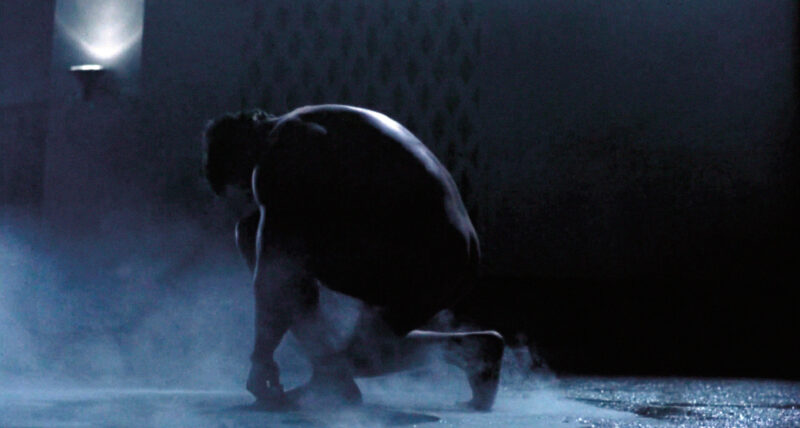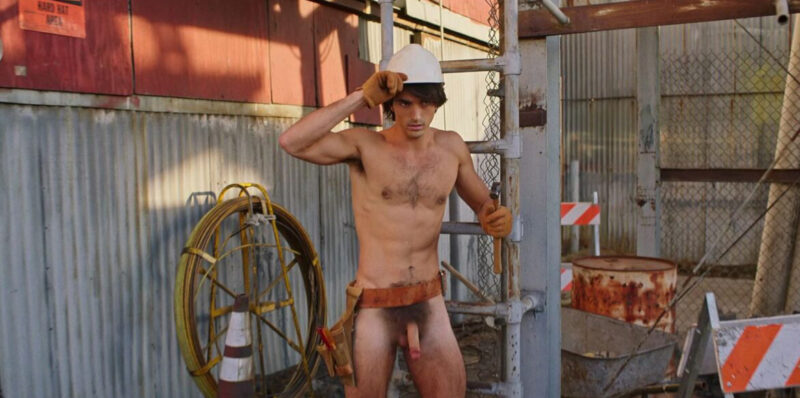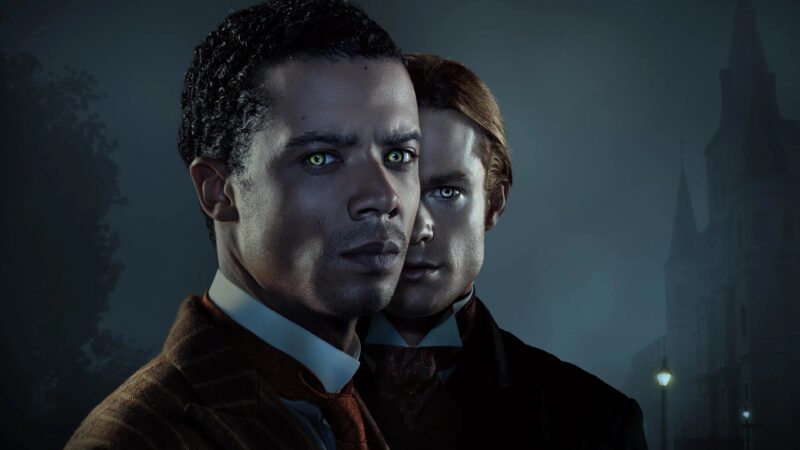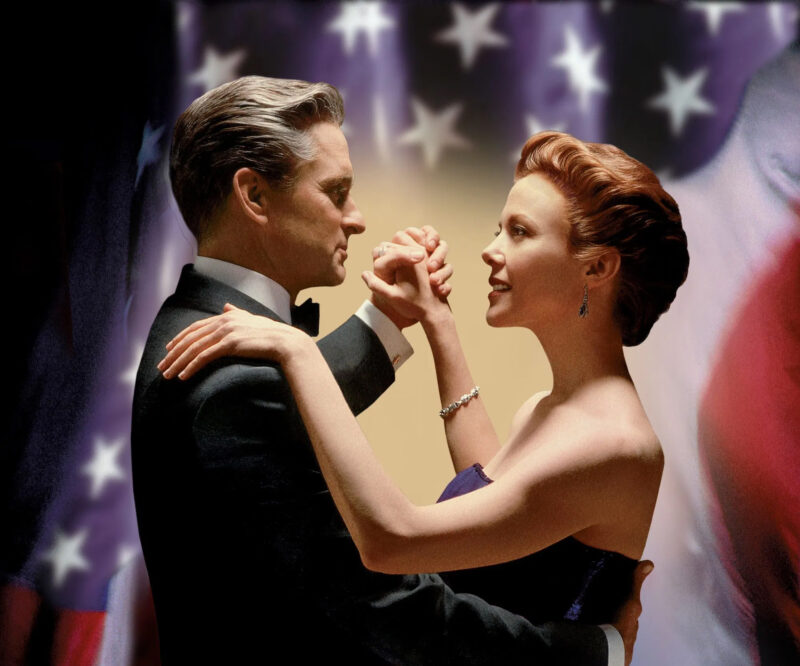Professor Emeritus in the Film and Media Studies Program at Arizona State University, Peter Lehman has pioneered studies on masculinity and the sexual representation of the male body. His seminal book Running Scared is often quoted here on Playgirl and so we wondered: What does Lehman think of the pseudo full-frontal scenes we’re seeing on TV? Here’s the exclusive interview he granted us.
In a much talked about article for The Conversation, you charge that “prosthetic penises reinforce existing stereotypes and taboos” and that they simply amount to a costume. What do you mean?
There’s a number of underlying concerns that come up when representing the penis. The first one is something that several filmmakers have spoken about. Which is that they can’t imagine being objectified in the way that they’re about to ask an actor to expose himself. The second one is the fear that showing the penis is threatening to men, in the sense that it gives women a chance to look and compare and respond in ways that are threatening to many men—and when I say men I do not believe that all men are the same in regard to anything, but I’m generalizing. The third one is maybe the most complicated: it’s the concept of the phallus in Western culture. It stands for something significant that men have and women don’t have which confuses two separate things, because the penis is just an organ, it doesn’t have any meanings attached to it—like strength or the promise of being a great lover… The phallus, on the other hand, has been an effort to create a sense of mystery and awe around the penis—it is useful within the patriarchy because it implies that there’s this incredible power that men have and it’s best if that’s kept in the dark, so to speak, so that it’s easier to believe in that kind of power. What happens if you show the penis is that everyone gets a chance to see it and it may not live up to that mythical phallus. There’s a fourth concern: homophobia. A lot of the of the filmmakers who are making these decisions are heterosexual men and I think they fear the audience that they’re trying to reach may react something like this: oh my God, I’m enjoying a scene with male nudity, that means that I’m a homosexual.
If the phallus is supposed to be a symbolic concept of strength and power, what can we do to help eliminate the gap between the penis and the powerful phallus? In film, the assumption has been to show the penis as some kind of impressive visual spectacle. If you take a look at many nude scenes in films and recent television series, the characters who are shown nude with their penises revealed have phallic attributes: a big penis will be impressive.
Series like The White Lotus, Minx, Spartacus and House of the Dragon come to mind…
Yes… if all men should have a big penis and if it’s going to be shown on film, casting is obviously one way of looking at this. Then there’s the introduction of the prosthetics, an entirely fabricated representation of the penis. Depending upon how much they’re going to show, they may be designed to cover or replace or augment what the actor has. Sometimes it’s the director, sometimes it’s the actor making the request for a prosthetic penis. And they will specifically ask for a large one and so, in a sense, they are putting something on over their body—which is why I’m saying it’s like a costume. It might just hide the penis—for example, like wearing a jockstrap. What’s happening here is a paradox, it’s like saying, OK finally we’re having frontal male nudity in the movies and on television, but that is not male nudity: it’s an actor being asked to put something on, which is envisioned to be part of his character. This is absurd, because what the penis looks like tells you nothing about who that character is—including any strength or power that he may or may not have.
So, they are covering up the actual penis by putting on something which is, in my mind, the same as putting on a pair of pants. The penis is never really shown though; it appears to be shown. Establishing some correlation between the penis you see and that character. That’s absurd, of course, but it enables total control of what people think they’re looking at, which is in fact totally regulated and controlled via this costume. And so, the prosthetic penis from my point of view is the most extreme form of regulation in the history of a long line of efforts to regulate.
Initially it was easy because you could talk about the penis, you could joke about it, but you couldn’t show it: By keeping it in the dark, this enabled the mythic notion of this awesome thing that men have and women don’t. But as soon as we began to show it in any number of discourses, then it had to be regulated in support of whatever the discourse was about. And so in movies and television shows that discourse is often about the assumption that a big penis is somehow an impressive spectacle that lives up to, or narrows, the gap between the actual penises and the symbolic phallus.
Movies are full of penis size jokes, by the way: the penises are joked about and it’s always the small penises that are the joke, implying that it’s humiliating for a man to have a smaller penis. As films become more and more explicit and show more and more nudity, the prosthetic penises solve the problem. They give the filmmakers total regulation of what the characters’ penis is going to look like. The frequent emphasis on size strengthens this ridiculous cultural belief that getting to see the penis will tell you something about the character. A ludicrous assumption but still very popular. From my point of view, we don’t have any male nudity anymore. We have a costume of male nudity, as opposed to actual male nudity.
In Running Scared, you write that conventional male hero figures like John Wayne and Clint Eastwood simply could not be shown naked. Not so within the European art cinema—and you mention Gerard Depardieu as an example. What’s the difference between Americans and Europeans?
The star system is so critical to Hollywood filmmaking. Stars like Tom Cruise develop what we call a persona—no matter what kind of character they’re playing in the film. Cruise has been making extreme action films and doing the stunts himself. In a way, that contributes to the awesome spectacle of his physical prowess. Same goes with the representations of masculinity with John Wayne and Clint Eastwood: there’s a lot of extreme power placed in these ‘personae.’ It has nothing to do with who John Wayne really is as a man, it’s just the collection of all these films he’s been in, where he’s portrayed as a certain kind of man. Wayne, Eastwood, Cruise… they all bring in their ‘persona,’ this symbolic power.
In European art movies, there’s less of an emphasis on that fixed persona, less than you have within the American star system. European actors are also more diverse in the kinds of roles they play, and they are more comfortable with the idea of nudity, including male nudity. It’s a paradox: in the United States, it’s the history of repressing those images and not showing anything that helped build up the expectation of ‘oh my God it must really be important, now they’re showing it.’ I’m not saying that there’s no effort to make the penises look impressive in European films, but I think it’s less tied to this persona, as developed by American male stars. So powerful that if you saw them nude, nothing that you see could possibly live up to that mythic power.
Think of Arnold Schwarzenegger, an Austrian actor who developed that persona in the States. He makes his initial appearance in Terminator crouched down: his body looks almost circular and then he slowly stands up and turns into this big powerful figure and to me that is a perfect summary of what we’re talking about. At the beginning of the film, his body looks like a flaccid penis—it’s not straight, it’s not hard, it’s not rigid, it’s full of curves—and then it becomes erect. As the scene develops, there is frontal male nudity, but he’s so far away from the camera that you cannot clearly see the penis.

‘The Terminator’ © Hemdale • Photo: TCD Productions/DB/Alamy.
When you look at something like Terminator you see that that phallic image of strength and power is deeply ingrained in American culture: There’s a kind of connection between the penis and the phallus, which really doesn’t exist. Arnold kicks ass: He’s still naked throughout all of the scene, but the filmmakers are smart enough to know not to show his penis, not to destroy the image of his phallic power. What kind of penis could Arnold possibly have to match his immensely strong and powerful character? Europeans are far less obsessed with the issue.
What about Asian cultures then? In Running Scared, you write about Oshima and In the Realm of the Senses (1976).
I would not use his work to characterize the representation of the male body within that particular culture. Oshima started out as a very experimental filmmaker. There’s a stereotype about Asian men that cuts across different countries—it doesn’t matter if China or Japan or Korea; the racist assumption that Asian men have small penises, that they are not masculine, that they are not highly sexual applies to them. The other racist assumption is about African Americans: they have big penises and they are very powerful. Racial stereotypes that do not hold validity but are deeply ingrained. What about the white man then? The effort is to make white men invisible, as if being white isn’t a color. So, if the Chinese or Japanese are lacking something and if African men have an excess of that something, what happens is that white men are not just invisible, because no one ever says ‘well, what about white men?’ but they are assumed to be ‘normal:’ they don’t have too little and they don’t have too much, they’re in the middle.
These racial stereotypes are horrific and Oshima accomplishes several remarkable things in In the Realm of the Senses: for one, he places no emphasis on casting an actor who had a big penis. He wanted to make a sexually graphic film, he was interested in American porn films, but he wanted to make one from a very different perspective. When I interviewed him, he made a reference to Chatterbox (1977), a creative porn film about a talking vagina.
When discussing cultures, it’s important to understand that they had very strict censorship in Japan. At the time that Oshima made that film, you couldn’t even show any penises, let alone an erect penis. He shot the film in Japan, but he knew he couldn’t develop it there. So, he sent it undeveloped to France and when he finished shooting, he went to France for post-production.
I’ve always been interested in artists who break the norms of their time—whatever system they’re working in. Oshima questioned a lot of things, he had that in him, but that doesn’t tell us anything about Japan, except it was more censorious than the United States. We have to be very careful with assumptions and generalizations based upon race, gender and sexual orientation. But if Oshima were with us today, I’m sure he would be laughing with me at how ludicrous prosthetic penises are and the idea that a male actor would have to wear an artificial costume.
Let’s switch back to Western culture: If we look at the representation of the penis in classic art (Greek and Roman) or during the Renaissance, we find no such phallic connotations. The penis is no doubt the least impressive feature in Michelangelo’s David or Praxiteles’ Hermes: emperors, gods, heroes all have muscular bodies and tiny penises, by today’s standards. What does it say about those cultures?
In Greek culture, small penises were seen as preferable. It’s one of the few moments in the history of Western culture, where small penises were seen as desirable and beautiful, whereas big penises were frequently associated with something animalistic. At the time that those works were being created, there was a dichotomy much different than the dichotomy in the United States, where penises are either an awesome spectacle or a humiliating, pathetic collapse of that spectacle. A construction that’s totally cultural and, to my mind, ridiculous. So, if we go back to the time periods that you’re talking about, there was a different kind of construction between the notion of the beastly on one hand and the human and the appealing on the other. Big penises were almost repulsive back then. Beasts have big penises and that kind of excess was seen as disgusting and almost frightening.
When they built a replica of Michelangelo’s David in Las Vegas, they tried to do it as carefully as they could. But people laughed and told jokes about how small David’s penis was. The Las Vegas solution was not to educate these people. Their solution was to take the statue down, put a bigger penis on it and then put it back on display. They created a kind of prosthetic penis for their David statue.
Let’s talk about censorship, all the more on social media, where vague and biased ‘community guidelines’ have taken us back to the 50s.
Americans have this notion that progress is always a straight line, it always goes forward, it always goes up. Social media deeply reflects cultural beliefs that are widespread within the culture and right now we’re entering a period that in many ways is more like the 50s than what life in America has been like since, say, the late 60s. For the record, I’m totally opposed to censorship of any kind, for any reason. I believe that it’s our job to understand things, to think about them critically, and we can’t do that in a climate of censorship which is antithetical to having an opportunity to try and understand and think for ourselves. Going right back to the prosthetic penises, there’s something censorious about them—oh my God, we can’t let them see real penises, let’s make a costume instead.
Oshima wasn’t afraid of western pornography, he didn’t tell me ‘I believe the United States is going to hell, how can you have movies like that…’ that’s not the way he reacted. He reacted by saying ‘there’s something interesting going on here, it’s something that I can learn from, since I come from a culture that’s almost the exact opposite when it comes to what you can show and what you can’t.’ A lot of people think, what if my child sees a gay porn film? But, of course, seeing a gay porn film will not make a child gay. There’s no causal relationship between watching pornography and then becoming like this or like that. It’s not the way these things work, any more than watching a John Wayne film makes me want to run out and be a cowboy with guns. Just an example of the censorious environment we’re in now. The first thing that happens in the rise of fascism is book burning and we’re burning books again by banning them from the curriculum.
When you refer back to the 50s, which was a very dark period in American history and for so many reasons, we recognize that things don’t just move forward and get more progressive and better and better over time. It’s more like a crazy up and down. We’re now going through a period where things are becoming regressive in some cases. Let’s look at prosthetic penises and the way they’re being used: A lot of people think, oh look how bold these movies are, look what they’re showing… No, they’re not bold, they’re the opposite, they’ve taken a step back and we’re reluctant to see the steps back.








